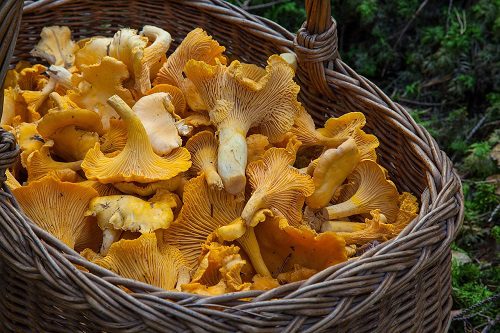Mushrooms are a versatile and delicious ingredient that has become increasingly popular in recent years. They come in a wide variety of shapes, sizes, and flavors, making them a favorite ingredient among chefs and home cooks alike. However, one aspect that can be confusing for consumers is the mushroom price per pound.
Here are approximate average prices per pound for some common types of mushrooms in the United States:
- Button mushrooms: $2 to $4 per pound
- Cremini mushrooms: $2 to $4 per pound
- Portobello mushrooms: $3 to $5 per pound
- Shiitake mushrooms: $6 to $12 per pound
- Oyster mushrooms: $8 to $20 per pound
- Morel mushrooms: $20 to $50 per pound
- Truffle mushrooms: $100 to $400 per pound
- White Button Mushrooms: $2.50 – $3.50
- Chanterelle Mushrooms: $10.00 – $20.00 (can vary widely)
- Porcini Mushrooms: $15.00 – $25.00 (can vary widely)
Please note that these prices are approximate averages and can vary based on factors such as location, seasonality, and market conditions. For the most accurate and up-to-date pricing information, I recommend checking with local grocery stores, farmers’ markets, or online produce retailers.
Factors That Affect Mushroom Price Per Pound
Mushrooms are sold by weight, typically in pounds or kilograms. The price per pound can vary widely depending on the type of mushroom, the season, and the region where it is grown. Additionally, mushrooms are often sold by grade, with higher grades commanding a higher price.

There are several factors that can affect the price of mushrooms. The first and most obvious is the type of mushroom. Some varieties, such as morels, truffles, and chanterelles, are considered luxury items and can command a premium price. Other factors that can impact the price of mushrooms include the season, the region where they are grown, and the demand for the particular variety.
Seasons
Seasonal availability is a major factor in mushroom pricing. Many varieties, such as chanterelles and morels, are only available for a few months out of the year, which can drive up their price. Conversely, other varieties such as button mushrooms and portobello mushrooms are available year-round and tend to be more affordable.

Location
The region where mushrooms are grown can also have an impact on their price. For example, mushrooms that are grown locally and are in season are likely to be more affordable than those that are imported from other regions. Additionally, the cost of labor and transportation can also affect the price of mushrooms, particularly if they are grown in remote or hard-to-reach areas.
Demand
Finally, demand plays a major role in mushroom pricing. As the popularity of mushrooms continues to grow, so does the demand for certain varieties. For example, shiitake mushrooms have become increasingly popular in recent years and are now widely available at most grocery stores. This increased demand can drive up the price of these mushrooms, particularly if they are in short supply.

Understanding Mushroom Grades
As mentioned earlier, mushrooms are often sold by grade, with higher grades commanding a higher price. The grading system is based on a variety of factors, including the size, shape, and color of the mushroom.
Grade A mushrooms are typically the largest, most uniform, and most visually appealing mushrooms. They are often used for display purposes in grocery stores and are typically sold at a premium price. Grade B mushrooms, on the other hand, may be slightly smaller or less uniform in shape and color. They are still perfectly fine to eat and are often less expensive than Grade A mushrooms.
Getting the Best Value for Your Money
While mushrooms can be expensive, there are a few ways to get the best value for your money. One strategy is to buy in bulk. Many grocery stores and specialty food markets offer discounts on larger quantities of mushrooms, which can help to bring down the overall price per pound.
Another strategy is to buy locally and in season. As mentioned earlier, mushrooms that are in season and grown locally are likely to be more affordable than those that are imported from other regions. Additionally, buying directly from the farmer or at a local farmers market can help to reduce the cost of transportation and distribution, which can also impact the price of mushrooms.
Finally, consider trying different varieties of mushrooms. While luxury mushrooms like truffles and morels can be very expensive, there are many other varieties that are both affordable and delicious.
For example, button mushrooms are widely available and tend to be more affordable than other varieties. Additionally, cremini mushrooms and portobello mushrooms are also popular options that are often available at a reasonable price.

Mushroom Pricing Summary
In summary, the price of mushrooms can vary widely depending on a variety of factors, including the type of mushroom, the season, the region where they are grown, and the demand for the particular variety. Understanding the grading system and buying in bulk or locally can help to reduce the overall cost of mushrooms.
Additionally, trying different varieties of mushrooms can provide a delicious and affordable alternative to luxury mushrooms like truffles and morels. With a little bit of knowledge and savvy shopping, it is possible to enjoy the delicious flavor and versatility of mushrooms without breaking the bank.

